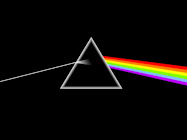
This slime mold I have seen hundreds of times in my lawn care experience. Its largest danger is that it prevents sunlight getting to the leaves and thus prevents the plant from forming food through photosynthesis. If left unchecked will bring a pale color (turf in my case) . Not a lawn disease requiring fungicide. You can simply sweep the dust off of the turf. I have seen it in small areas, about fist to open hand in size; a square foot is a large area of turf grass slime mold. I usually come across this beast in unshaded areas early to mid summer. Also notice the tip of the grass blade; this is caused by a dull mower blade, important to keep the blades sharp so the mower will cut the grass rather than rip or tear it. Once a year you should take the blade off to sharpen on a grinder. Once or twice in the mowing season it would be good to drag a metal file across the blade 5-10 times, much like honing a steak knife.
Avoid mowing when the grass is wet, alternate mowing patterns weekly, side to side one week, front to back the next (I always preferred diagonal lines corner to corner) looks more professional.
Another lawn disease known as Red Thread
 Early spring, end of March is the time to watch for this disease. An application of Round 2 (late spring application) fertilizer abundant in nitrogen will clear this mess up.
Early spring, end of March is the time to watch for this disease. An application of Round 2 (late spring application) fertilizer abundant in nitrogen will clear this mess up.The numbers on the fertilizer bag or analysis is in order, N-P-K nitrogen, phosphorus and potassium. Phosphorus has been reported to leach into the ground water and most lawn care programs leave this macro nutrient out of the fertilizer. We use one application in our 6 app program containing phosphorus. The analysis on a fertilizer to clear up Red Thread would be some thing close to 24-0-4
or you can just hire a professional like me :)






No comments:
Post a Comment